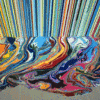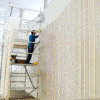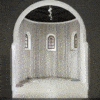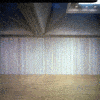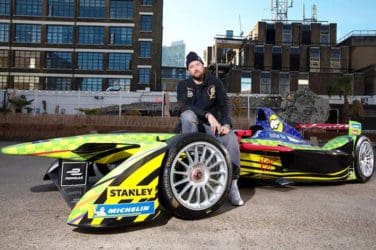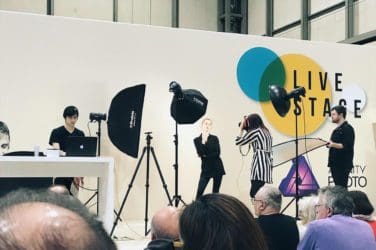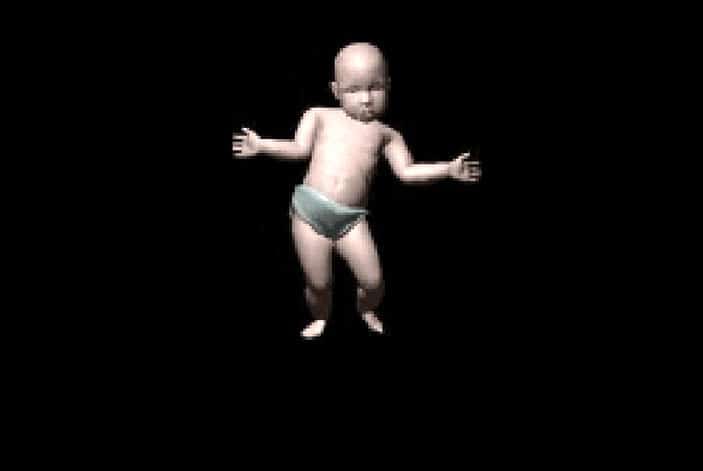words Al Woods
It’s often said that every picture tells a story, but what about art which takes its own creation as its primary narrative? Process art stresses that art can be about the creative journey rather than just the work itself.
It has become a way for artists to meld the conceptual with the physical process of creating art, as well as giving audiences an insight into this process.
The movement emerged in the late sixties in response to art’s increasing status as a commodity; process artists felt that art meant much more than the act of money changing hands. This approach has also leaked into fields beyond visual art, with postmodern literature, film and music becoming as concerned with its own making as telling any story beyond that.
Process art takes the medium as the message
Process artists often use natural materials in their work, including fire, wax and broken glass. This has given them greater latitude in their creative processes, frequently leading to improvisatory and impulsive actions, such as cutting, hanging, freezing or decomposing of the materials used.
The parallel rainbow-like lines of Turner Prize nominated artist Ian Davenport’s work may look stunning at first glance, but arguably the most fascinating aspect of his “puddle paintings” is the pool of paint which gathers on the floor below his canvases. These puddles emphasise his artistic breakthrough when, as he puts it, “the how to paint became the what to paint”. Another notable process artist, Richard Serra, experimented with many different materials and methods, frequently working with lead as a primary medium. Serra catches the metal as it is dropped from above, alternatively throwing molten lead into the corners of a room, allowing whatever form they take as they set to become the work.
These types of works are designed to emphasise (rather than ignore) what process artist Wyatt Kahn calls the “human experience of imperfection” which goes into all art. These pieces can be just as striking as figurative masterpieces which depict recognisable shapes, faces and scenarios; instead, the most recognisable thing about works of process art is what it took for them to be made in the first place.
Behind the music
Even when art isn’t explicitly about the creative process that brought it into the world, understanding what went into its creation can still make a work more exciting, particularly when it comes to music. People have been fascinated by how sounds are captured ever since Thomas Edison first recited “Mary Had A Little Lamb” into a phonograph in the late twenties. Over the next few decades, the technology evolved allowing for orchestras and rock groups to record on multiple tracks of tape, meaning that the members of a group didn’t need to be in the studio at the same time. Music became less about capturing live sound, and more about “using [a] recording studio as an instrument” in its own right. This allowed musicians to create sounds which no one could replicate in a live setting, from unnatural reverbs on instruments to the work of the BBC Radiophonic Workshop in creating entirely synthesised sounds.
While it would take years before the process behind how some of these sounds were made would be easily understood by a wider audience, the sense of wonder behind futuristic-sounding music was a major draw. For example, while the unique drum sound on the David Bowie album Low was made by an Eventide Harmonizer, the album’s producer Tony Visconti still pitched it to Bowie in less-than-technical terms, telling him with wonder that the device “fucks with the fabric of time!”
Yet this infamous quote is still part of the story behind the record, and the image of the producer excitedly phoning Bowie arguably adds even more excitement to dropping the needle on Low. More recently, the immense popularity of the Song Exploder podcast has seen some of music’s biggest names dissecting what went into the recording of their work. The Financial Times notes that Song Exploder may “go into the minutiae of their ‘process’, [but]…always [gives] the sense of a broader narrative” and the characters behind the songs.
The likes of Song Exploder or Sodajerker On Songwriting may demystify what went into artists’ work, but by offering up the story behind what these musicians were thinking when they recorded their music, an audience can feel closer to the artists they love through learning how it was made. Not only that, but these podcasts also work as a cultural artefact in its own right, providing listeners with even more to enjoy beyond the songs themselves.


